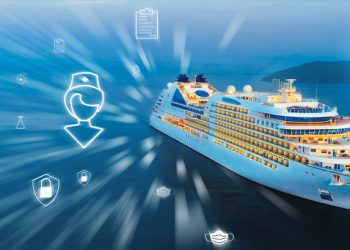Evac recently released material of the retrofit process of its wastewater treatment system onboard a Regent Seven Seas Cruises vessel in October 2016.
“No retrofit is ever standard,” says Carlo Paiella, Regent Seven Seas Vice President, Technical Operations. “Every ship is unique and preparations are made well in advance. In this case, the planning was well done and the execution was flawless.”
In particular, while Seven Seas Voyager was in drydock, two openings were cut in the hull, one starboard and one port. This enabled the MBR units to be brought as ready-assembled and tested units.
Cutting the hull may sound dramatic, but other options are more complicated and expensive, says Ljubo Jurisevic, Managing Director of Evac Germany and President of Evac’s Global Cruise Business.
“The alternative was to bring all equipment such as pumps, blowers, membranes, sensors, and flat sheet stainless steel plates, down to the engine room on deck one and start the welding of the MBR tank and assembly of equipment while the ship was in operation.”
The company says that such a plan requires much more time on board for the installation crew, who would occupy cabins which are otherwise sources of revenue for the cruise line.
According to Regent’s Paiella, the vessel was in drydock for two weeks, but it only took seven days to open the hull, bring in the MBR unit, and close the hull.
“You put a schedule together and involve the yard, who provides the core assistance you need. Everybody plays his part. If any step is delayed, then a domino effect takes place, and the departure of the vessel can be delayed.”
Seven Seas Voyager, however, was the first retrofit that Regent had done with Evac, though they had worked before with other suppliers.
Source & Image credit: Evac






























































